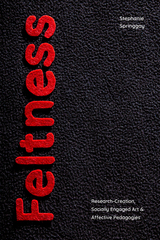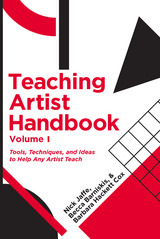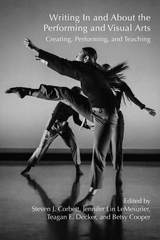3 books about Arts in education

Feltness
Research-Creation, Socially Engaged Art, and Affective Pedagogies
Stephanie Springgay
Duke University Press, 2022
Stephanie Springgay’s concept of feltness—which emerges from affect theory, queer and feminist theory, and feminist conceptions of more-than-human entanglements—is a set of intimate practices of creating art based on touch, affect, relationality, love, and responsibility. In this book, she explores how feltness is a radical pedagogy that can be practiced with diverse publics, including children, who are often left out of conversations about who can learn in radical ways. Springgay examines the results of a decade-long project in which researchers, artists, students, and teachers participated in events in North American elementary, secondary, and postsecondary institutions. In projects that ranged from children learning to be critics and artists to university students experimenting with building “a public” through art, participants blended participatory art creation with academic research to address social justice issues. Springgay shows how feltness can redefine who is imagined to be capable of complex feeling, experiential learning, embodied practice, social engagement, and intimate care. In this way, feltness fosters learning that disrupts and defamiliarizes schools and institutions, knowledge systems, values, and the legibility of art and research.
[more]

Teaching Artist Handbook, Volume One
Tools, Techniques, and Ideas to Help Any Artist Teach
Nick Jaffe, Becca Barniskis, and Barbara Hackett Cox
University of Chicago Press, 2015
Teaching Artist Handbook is based on the premise that teaching artists have the unique ability to engage students as fellow artists. In their schools and communities, teaching artists put high quality art-making at the center of their practice and open doors to powerful learning across disciplines.
This book is a collection of essays, stories, lists, examples, dialogues, and ideas, all offered with the aim of helping artists create and implement effective teaching based on their own expertise and strengths. The Handbook addresses three core questions: “What will I teach?” “How will I teach it?” and “How will I know if my teaching is working?” It also recognizes that teaching is a dynamic process that requires critical reflection and thoughtful adjustment in order to foster a supportive artistic environment.
Instead of offering rigid formulas, this book is centered on practice—the actual doing and making of teaching artist work. Experience-based and full of heart, the Teaching Artist Handbook will encourage artists of every experience level to create an original and innovative practice that inspires students and the artist.
This book is a collection of essays, stories, lists, examples, dialogues, and ideas, all offered with the aim of helping artists create and implement effective teaching based on their own expertise and strengths. The Handbook addresses three core questions: “What will I teach?” “How will I teach it?” and “How will I know if my teaching is working?” It also recognizes that teaching is a dynamic process that requires critical reflection and thoughtful adjustment in order to foster a supportive artistic environment.
Instead of offering rigid formulas, this book is centered on practice—the actual doing and making of teaching artist work. Experience-based and full of heart, the Teaching Artist Handbook will encourage artists of every experience level to create an original and innovative practice that inspires students and the artist.
[more]

Writing in and about the Performing and Visual Arts
Creating, Performing, and Teaching
Steven J. Corbett
University Press of Colorado, 2020
The performing and visual arts have much to offer writing studies in terms of process, creativity, design, delivery, and habits of mind (and body). This collection is intended for teachers and researchers of writing in and across the disciplines, in both secondary and post-secondary settings, and for those outside of writing studies who wish to infuse more writing into their performing and visual arts curriculums and courses. Filled with evocative images and vivid descriptions, contributors showcase ways of knowing and doing in the performing and visual arts. Contributors also offer teachers in the performing and visual arts go-to practical designs and strategies for teaching writing in their fields.
[more]
READERS
Browse our collection.
PUBLISHERS
See BiblioVault's publisher services.
STUDENT SERVICES
Files for college accessibility offices.
UChicago Accessibility Resources
home | accessibility | search | about | contact us
BiblioVault ® 2001 - 2024
The University of Chicago Press









